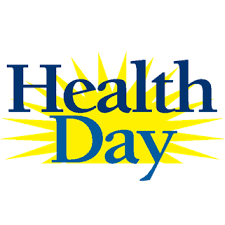Emergency preparedness: Identifying essential supplies for unplanned surgical events

While most emergency surgical procedures are carried out uneventfully and safely, the OR is also a place where potentially life-threatening and least-expected instances can arise. Emergencies such as malignant hyperthermia, intraoperative cardiac arrest, and anaphylaxis can catch OR leaders and staff off guard. Perioperative teams need proper and adequate preparation…
Study: Postoperative delirium triples risk of complications, death in older patients

Editor's Note Postoperative delirium significantly worsens outcomes for older adults undergoing major noncardiac surgery, according to research published July 8 in JAMA Network Open. Specifically, findings showed patients who developed postoperative delirium had 3.5 times the odds of death or major complications, 2.8 times the odds of 30-day mortality, and…
GLP-1 drugs show promise for preoperative weight loss

Editor's Note Glucagon-like peptide-1 (GLP-1) receptor agonists may offer orthopedic patients with obesity and type 2 diabetes a powerful tool for preoperative weight loss and potential disease modification, according to a July 10 review article in The Journal of Bone and Joint Surgery. However, the agents carry perioperative risks that…
Study: Stem cell strategy could eliminate kidney transplant patients’ need for immunosuppressants

Editor's Note A stem cell-based transplant method enabled most kidney recipients in a recent clinical trial to stop taking immunosuppressive drugs, according to a July 15 article in HealthDay. As detailed in the article, the approach was tested in a phase 3 multicenter, randomized controlled trial published in the American…
Study: Surgical patients face higher odds of food insecurity

Editor's Note New research shows surgical patients in the US face a significantly greater risk of food insecurity than nonsurgical patients, even after adjusting for demographic and socioeconomic differences. Findings also point to potential underutilization of the Supplemental Nutritional Assistance Program (SNAP) benefits among surgical patients, study authors write. …
Study: Surgeon-anesthesiologist familiarity could reduce complications in select surgeries

Editor's Note Greater familiarity between surgeons and anesthesiologists was associated with reduced major morbidity in certain high-risk procedures, according to a Canadian retrospective cohort study published in JAMA Surgery. As detailed in a May 28 report from MedPage Today, the population-based analysis included more than 711,000 index procedures, finding an…
Study: Robotic-assisted cholecystectomy raises complication risk in acute care despite similar injury rates

Editor's Note Recent research shows robotic-assisted cholecystectomy (RAC) results in similar bile duct injury rates as laparoscopic cholecystectomy (LC), but risks are higher for postoperative complications, longer hospital stays, and more frequent drain use. Published May 21 in JAMA Surgery, the large-scale cohort study analyzed outcomes from over 844,000 acute…
Commentary: Overlooking, underfunding perioperative mental health threatens patients
Editor's Note Amid a lack of focus and lack of resources on perioperative mental health, alleviating patient anxiety and preventing poor surgical outcomes requires creative solutions. This is the central argument of a May 12 commentary in The Conversation by Renée El-Gabalawy, a clinical psychologist and associate professor at the…
Study: Machine learning quadruples delirium detection in hospitalized older adults

Editor's Note A machine learning (ML) model that integrates clinical data with natural language processing significantly improved detection and management of hospital delirium in older adults. Results were published May 7 in JAMA Network Open. Conducted at Mount Sinai Hospital, the quality improvement study evaluated the association of an ML-based…
Study shows WHO surgical checklist boosts safety, but compliance gaps risk patient outcomes

Editor’s Note Tertiary hospitals are embracing the World Health Organization (WHO) Surgical Safety Checklist (SSC), yet inconsistent compliance—especially during time-out—exposes patients to avoidable risks, Cureus April 29 reports. In this study, the researchers found that while overall integration of the SSC is promising, there were compliance gaps particularly in pre-incision…

 Free Daily News
Free Daily News